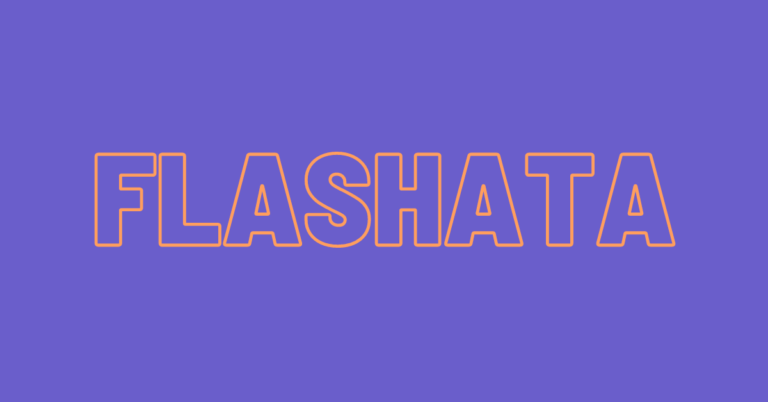The term “Flashata” encompasses a range of concepts and phenomena, from flash-freezing techniques to narrative flashbacks in storytelling. This multifaceted term touches upon areas as diverse as culinary arts, photography, psychology, and literature. In this comprehensive article, we’ll delve into the various dimensions of Flashata, exploring its applications, meanings, and implications across different domains.
Flashata in Culinary Arts: Flash-Freezing Techniques
· Understanding Flash-Freezing:
- Flashata finds application in culinary arts through flash-freezing techniques. This involves rapidly freezing food items using ultra-low temperatures, preserving freshness, texture, and nutritional value.
· Benefits of Flash-Freezing:
- Preservation of Flavor: Flash-freezing locks in flavors, ensuring that food retains its natural taste.
- Texture Retention: By quickly freezing food, the formation of large ice crystals is minimized, preserving the texture of ingredients.
- Nutritional Integrity: Flash-freezing helps retain the nutritional content of foods, making it a preferred method for preserving perishable items.
· Applications in Food Industry:
- Flashata techniques are widely used in the food industry for freezing fruits, vegetables, seafood, and even prepared meals. It allows for extended shelf life without compromising on quality.
Flashata in Photography: The Flash-Lamp Effect
· Flash-Lamp Photography:
- In photography, Flashata refers to the use of flash lamps or strobes to illuminate subjects during image capture. This technique is commonly used in studio photography, events, and portrait sessions.
· Advantages of Flash Photography:
- Enhanced Lighting: Flash lamps provide a burst of intense light, allowing photographers to capture well-lit images even in low-light conditions.
- Freeze Motion: Flashata in photography can freeze fast-moving subjects, capturing crisp details and avoiding motion blur.
· Creative Applications:
- Flashata techniques in photography offer creative possibilities, including high-speed photography, freeze-frame effects, and dynamic lighting setups for artistic expression.
Flashata in Psychology: Exploring Flashbacks
- Narrative Flashbacks: Flashata extends to the realm of psychology and storytelling through narrative flashbacks. These are scenes or sequences in literature, film, or media that depict events from the past, often providing context, backstory, or emotional depth to a narrative.
· Purpose and Function:
- Character Development: Flashbacks in storytelling contribute to character development by revealing motivations, traumas, or pivotal moments in a character’s life.
- Plot Enhancement: Flashbacks can enhance the plot structure, offering insights into the story’s overarching themes, conflicts, and resolutions.
- Emotional Impact: Well-executed flashbacks evoke emotional responses from audiences, fostering empathy, connection, and engagement with the narrative.
Examples of Flashbacks: Flashata in narrative storytelling is prevalent across various mediums. Examples include flashback sequences in literature (e.g., “The Great Gatsby” by F. Scott Fitzgerald), film (e.g., “Citizen Kane” directed by Orson Welles), and television series (e.g., “Lost” created by J.J. Abrams).
Flashata and Cultural References: Flash-to-Bang Time
- Flash-to-Bang Time: In military and meteorological contexts, Flashata refers to the time interval between the observation of a lightning flash and the subsequent sound of thunder. This concept is used to estimate the distance of a lightning strike.
- Significance in Safety: Understanding flash-to-bang time is crucial for assessing the proximity of lightning strikes, helping individuals take safety measures during thunderstorms and adverse weather conditions.
Flashata and Tactical Usage: Flashbangs
- Definition of Flashbangs: In tactical operations and law enforcement, Flashata is associated with flashbangs or stun grenades. These devices emit a blinding flash of light and a loud noise upon detonation, temporarily disorienting and distracting targets.
2. Tactical Applications:
- Entry Operations: Flashbangs are used in SWAT team operations and military maneuvers to gain entry into buildings, neutralize threats, and create a tactical advantage.
- Riot Control: Law enforcement agencies may deploy flashbangs for crowd control purposes, dispersing crowds and deterring aggressive behavior.
Flashata: A Multifaceted Concept
From culinary innovations to storytelling devices and tactical strategies, Flashata encompasses a wide spectrum of meanings and applications. This multifaceted concept highlights the interconnectedness of diverse fields, where the notion of “flash” signifies rapid action, illumination, and impactful moments. Whether in freezing food, capturing images, crafting narratives, or ensuring safety, Flashata plays a significant role across various domains, showcasing the versatility and ingenuity of human creativity and innovation.

